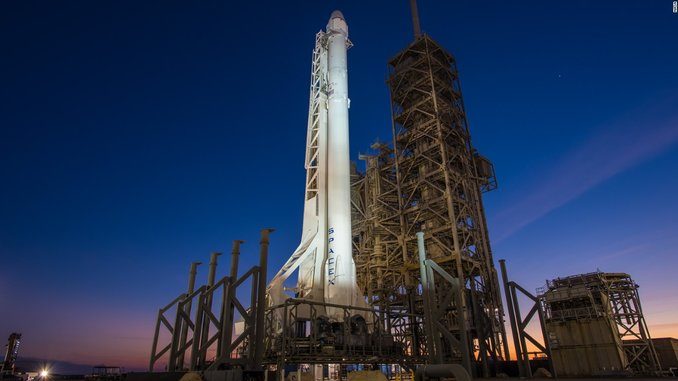
SpaceX on Tuesday, August 6, successfully completed its ninth rocket launch of 2019, successfully deploying the $250 million AMOS-17 communications satellite for Israeli firm Spacecom.
The Falcon 9 rocket lifted off from Cape Canaveral Air Force Station’s Space Launch Complex 40 in Florida early evening local time, with the entire event streamed live on YouTube.
In accordance with SpaceX’s aim of creating a reusable rocket system to reduce the cost of space missions, this was the first-stage booster’s third outing after previous launches in July and November 2018. But high energy requirements for this latest launch — the satellite tipped the scales at a whopping 14,330 pounds (6,500 kg) and engine cut off occurred at a higher altitude than usual — meant the booster had too little fuel left to attempt a landing, depriving fans of the chance to witness yet another spectacular touchdown, CBS writes.
Another part of the reusable system involves catching the rocket fairing — or nose cone — on its return to Earth. On Tuesday’s mission, SpaceX’s Ms. Tree vessel managed to catch part of the fairing in a giant net as planned, marking the first time for it to catch part of a Falcon 9 nose cone, and the second successful catch overall after the first one from the Falcon Heavy rocket in July 2019. SpaceX posted a video of Tuesday’s impressive catch — check it out below.
It is also the first time for SpaceX to deliver a payload for Spacecom since the loss of its $200 million Amos-6 satellite in a devastating launchpad explosion in September 2016. No one was hurt in the incident.
Speaking to reporters last week, Spacecom CEO David Pollack said his company went through the normal procedures before selecting SpaceX as its launch partner, researching its flight record and analyzing costs, among other considerations.
In fact, reports suggest SpaceX didn’t charge Spacecom for this launch in light of what happened last time, a factor that we can safely assume was majorly important in the company’s decision to go with SpaceX. Still, Tuesday’s launch must have been an anxious one for the teams at both SpaceX and Spacecom, as this was a mission that really couldn’t afford any major mishaps.
The AMOS-17 satellite will provide broadband coverage over Africa, the Middle East, and Europe, with the primary aim to boost internet access throughout the African continent. It’s expected to stay in operation for at least 20 years.

Be the first to comment